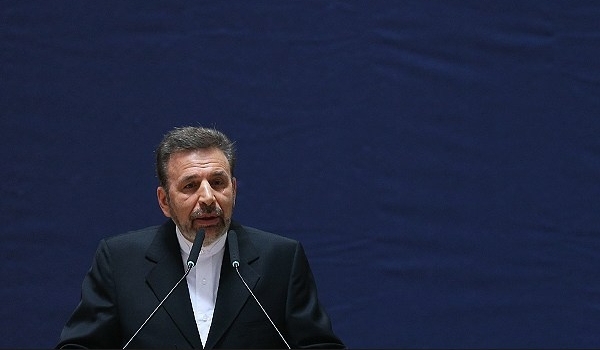
“We need at least one national satellite and we should understand our existing weaknesses to materialize this goal,” Vaezi said, addressing a ceremony to introduce new Head of the ISA Mohsen Bahrami in Tehran on Monday.
Noting that four new satellites built by Iranian experts are on the country’s launch list at present, he said, “ISA will choose one of these four satellites to send it into the space.”
Vaezi also informed that in addition to Sharif Sat and Tadbir (Wisdom) satellites, other satellites have also been built by the Iranian Space Research Center and Amir Kabir University of Technology, and all the four will be launched in the near future.
Iran has taken long strides in recent years to develop its space industry and to build different types of satellites and explorers.
In relevant remarks in December, Deputy Head of Iran’s Space Agency (ISA) Hamid Fazeli announced that Sharif Sat built by Iranian experts at Sharif University of Technology, Fajr (Dawn) Satellite and Tadbir satellites were ready to be sent into space.
He further noted that Sharif Sat and Fajr satellites were top priorities of the ISA for being launched, and added that Nahid (Venus) satellite would be sent into space soon.
Also, media reports said in March that the Iranian researchers were designing a manned spacecraft to bring back astronomers from 150-200 kilometers above the earth.
Iran also unveiled an E1 manned spacecraft mock-up in Space Exploration Systems Research Center last month.
Also in February, the indigenous Fajr satellite was sent into the orbit on the back of the home-made Safir-e Fajr launcher.
In January 2013, the Defense Ministry’s Aerospace Industries Organization announced that it had sent a monkey into the space on the back of Pishgam (Pioneer) explorer rocket, and that it had brought back and recovered the living cargo.
The Aerospace Industries Organization said it had sent the living creature into space aboard an indigenous biocapsule as a prelude to sending humans into space.
It said the capsule was sent to an orbit beyond 120km in altitude and carried out telemetry of the environmental data records.
The explorer rocket was launched by the Aerospace Industries Organization and it returned to the Earth after reaching the desired speed and altitude, and the living creature (monkey) was retrieved and found alive.





チューブタイプのボートで進む「アクアライド」は水しぶきを上げて岩壁にぶつかったり、他のボートに当たったりと迫力満点です。